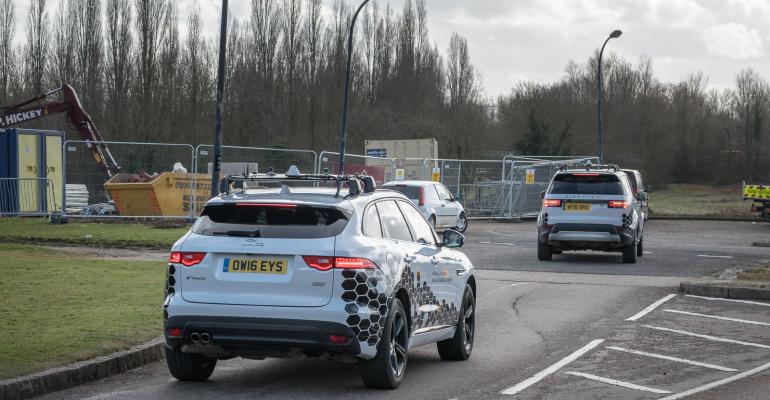Jaguar Land Rover is testing smart, connected cars on public roads as part of a £7.1 million ($9.3 million) project creating the U.K.’s first fully connected road infrastructure geared toward self-driving cars.
The U.K. Connected and Intelligent Transport Environment (UK CITE) project creates a real-world lab for companies to test how connected and autonomous vehicles can interact with a communications infrastructure called V2X.
More than 40 miles (64 km) of the M40 motorway connecting London and Birmingham; the M42 motorway from Bromsgrove in Worcestershire to Ashby-de-la-Zouch in Leicestershire; A45 from Birmingham to Thrapston; and A46 from Bath, Somerset to Cleethorpes, Lincolnshire, will see the installation of a world-first combination of wireless technologies.
The DSRC, 3/4G mobile networks, Wi-Fi and fiber-optic networks are designed to ensure vehicles are always connected to each other and to infrastructure.
The test environment is available to automakers or fleet users to test V2X technologies.
Connected and autonomous test vehicles are testing the impact of V2X on road safety, traffic flow and the ability to provide other services such as Wi-Fi and cybersecurity.
JLR vehicles including Discovery Sport, Range Rover and F-Pace models have been equipped with the combination of wireless technologies.
Connecting cars to each other and their surroundings is considered a vital step for safe, large-scale deployment of self-driving cars.
The latest connected technology complements other vehicle sensors and extends a vehicle’s ability to “see” farther down the road and “speak” to other vehicles, infrastructure, pedestrians and the network.
JLR cites as an example a warning that a car too far ahead for a following driver to see has applied its brakes, helping that driver avoid a potential accident.
The system will work with both manual and autonomous driving and so will greatly improve road safety across levels of autonomy.
JLR Connectivity Manager Colin Lee says to realize the full benefit of self-driving cars, an understanding of the infrastructure required to support them is needed.
“Connectivity not only takes us a step closer to making self-driving cars a reality, but it also creates the platform to bring more connected safety features to our customers within the next few years,” Lee says in a statement.
JLR will be testing a range of intelligent connected features such as emergency electronic-brake-light warning, emergency-vehicle warning, and in-vehicle signage for road-work and traffic warnings.





